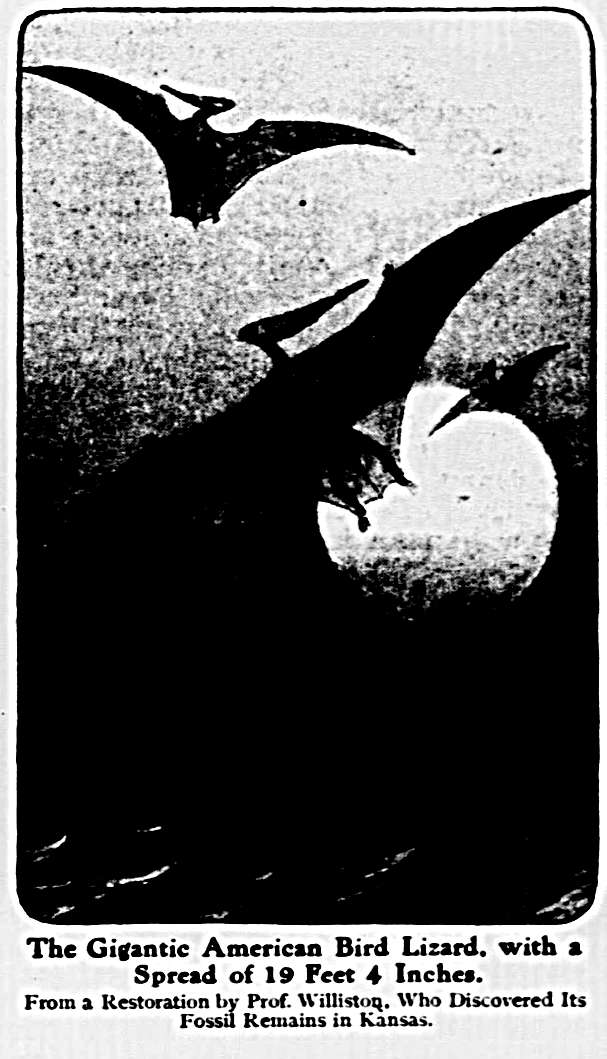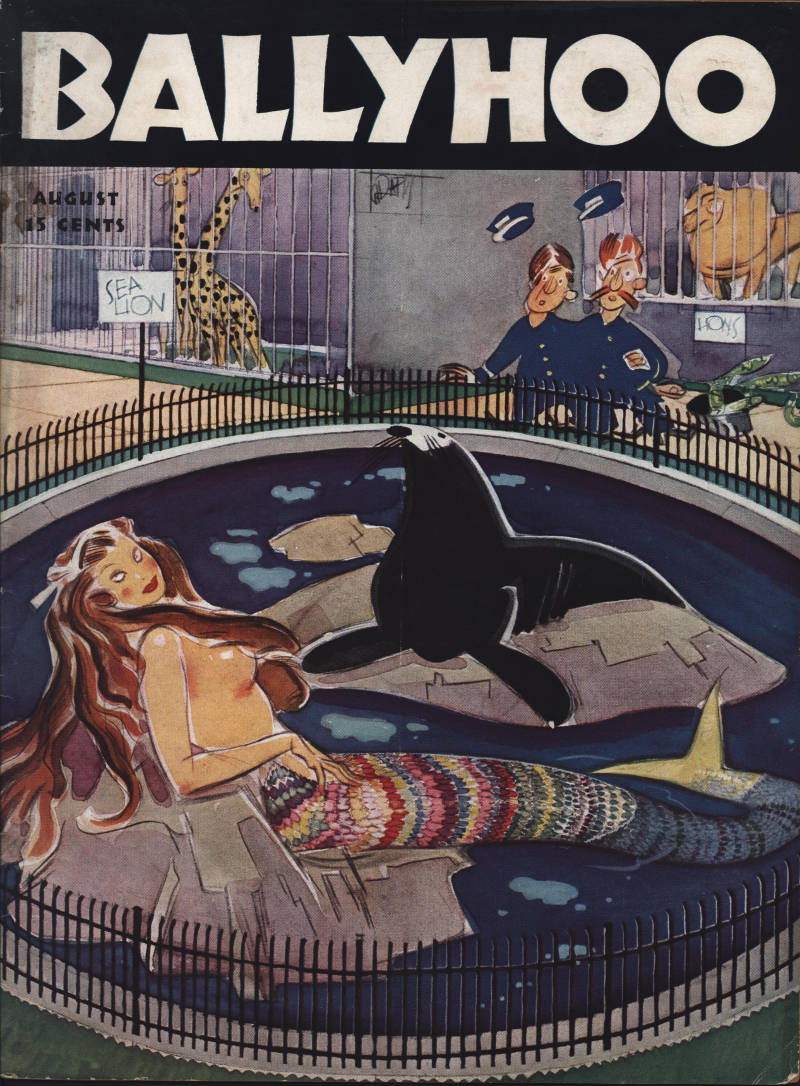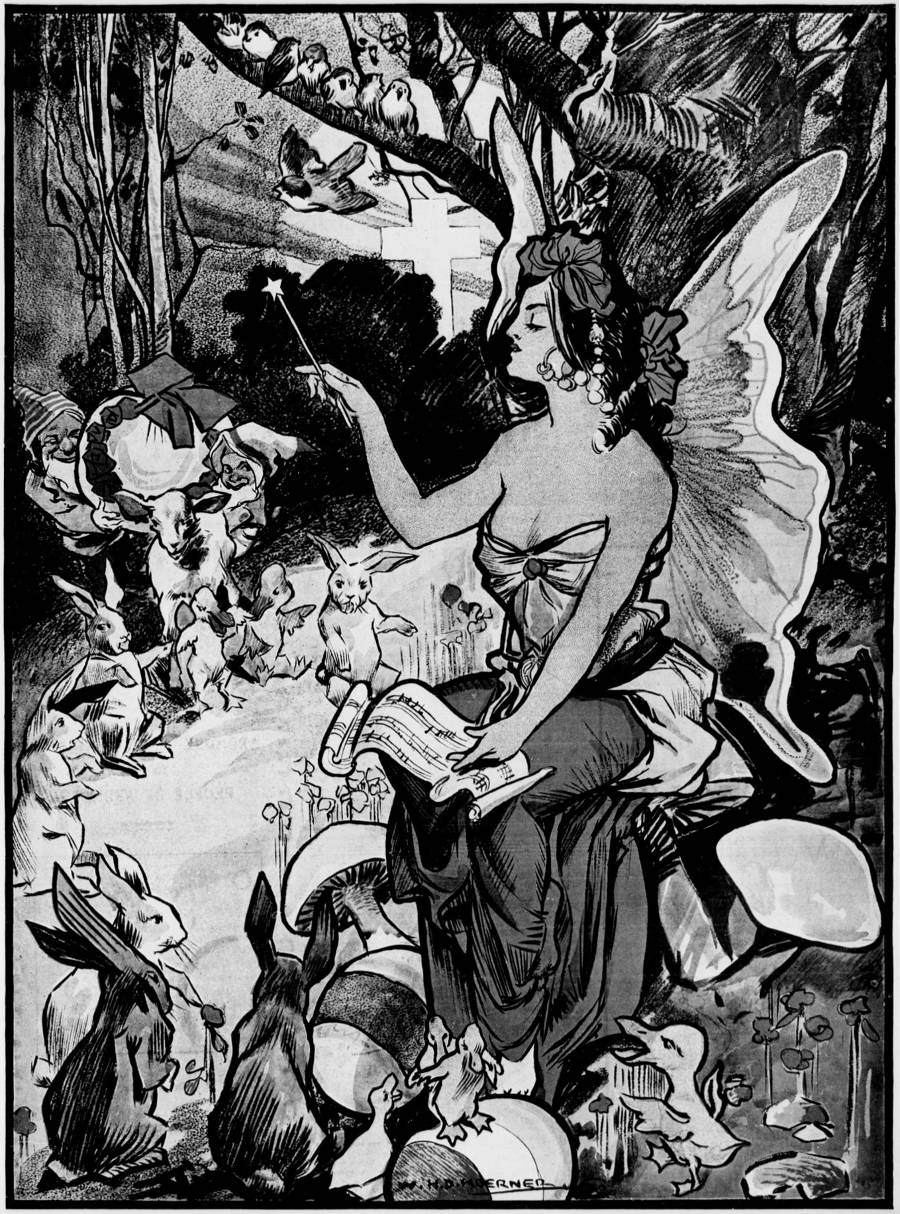Skull Rock, 1897
West Superior, Wis.. July 20.—On a steep, rocky bluff overhanging a narrow inlet of the Lake of the Woods, about two and one half miles from the mining village of Rat Portage, Ontario, stands one of the most freakish objects to be found anywhere in the world. It consists of a ledge of solid granite which bears a most grotesque resemblance to a human head, its cavernous mouth partly open, its features distorted with a horrible grin. Rude art has supplemented nature in perfecting the resemblance. This monstrosity is commonly known as “Devil’s head,” but is also called “skull rock.” It is about twenty feet high above the bluff, and about twenty-one feet in width at the widest part. Ears, eyes, and a mouth are plainly visible —the latter appearing in the form of a cave, which extends back in the stone about ten feet, and then, like a veritable throat, shoots down a considerable distance into the hill on which it rests. Continue reading “Skull Rock, 1897”
Ballyhoo, Aug, 1936
Flying Dragon and Reptiles
Evening Star, Washington D.C., October 18, 1908
FLYING DRAGON AND REPTILES
By James Carter Beard
 IT was not many years ago, at a time when winged dragons were ranked with centaurs, hippogriffs, unicorns, and mermaids as impossible monsters, to be looked for only fairy tales and heraldic devices, that to everyone’s fossil remains of these same winged dragons were actually discovered in limestone in the vicinity of the village of Solnhofen, Bavaria. Speaking of these fossils, Charles Kingsley facetiously remarked. “People them pterodactyls, only because they are ashamed to call them flying dragons after denying so long that flying could exist.
IT was not many years ago, at a time when winged dragons were ranked with centaurs, hippogriffs, unicorns, and mermaids as impossible monsters, to be looked for only fairy tales and heraldic devices, that to everyone’s fossil remains of these same winged dragons were actually discovered in limestone in the vicinity of the village of Solnhofen, Bavaria. Speaking of these fossils, Charles Kingsley facetiously remarked. “People them pterodactyls, only because they are ashamed to call them flying dragons after denying so long that flying could exist.
But folks, and especially scientific folks, before these fossils were found, were not entirely without excuse for doubting the existence of such creatures. The only fact is that the only animals now living, barring insects, that can really fly are birds and bats. Many animals said to fly, as, for instance, flying squirrels, do not really fly; but are capable of sailing down from a higher to a lower position in a more or less slanting direction, only by the aid of a flap of skin extending along the flanks from the fore legs to the hind ones, which, when the limbs are spread apart as far as possible, makes a sort of parachute like extension from the body, preventing an abrupt descent to the ground Neither do flying fish really fly; but, impelled by a vigorous rush through the water, spring, wet and glittering, from a wave, and. upborne on their large, flat breast wings, which serve them as aeroplanes, are carried in a straight course through the air as long as the impetus lasts or their wings remain wet, after which they drop incontinently back into their native element They sometimes travel for two hundred yards at the rate of fifteen miles an hour, rising twenty-five feet above the water It is magnificent; but it is not flying There are several species of lizards too that take short swoops through the air, supported by an expansion of the skin stretched on several much elongated ribs, so as to form a sort of half-kite on each side of their bodies. One species called the flying gecko is furnished with a broad flap or rim which extends around body, tail, and limbs But the most singular of these so called flyers is the flying treetoad, which, by means of membranes extending between its fingers and toes, is enabled as it leaps to descend more easily from branch to branch. Continue reading “Flying Dragon and Reptiles”
The Electrical Experimenter, June, 1917
A Little Something for Everyone…
Jerusalem, 1930s
Various scenes in and around Jerusalem in the 1930s








